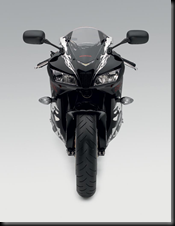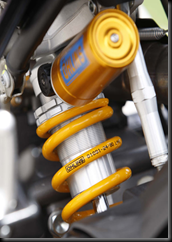
World Champion Valentino Rossi delighted the home crowd at Misano on Sunday with his second successive victory at the Italian circuit, to reassert his authority in the MotoGP title race.
A 2.4s win at the Gran Premio Cinzano di San Marino e della Riviera di Rimini over his team-mate Jorge Lorenzo was the perfect response to his Indianapolis crash and Rossi now leads the Spaniard by 30 points in the standings, with four rounds to go.
Lorenzo did his very best to stay with his illustrious team-mate over the course of the 28 lap contest, having overtaken Dani Pedrosa after a short battle, but Rossi was unstoppable in the Italian sunshine.
Having held the lead in the early stages Repsol Honda’s Pedrosa could not match the pace of the powerful Fiat Yamaha pair, eventually crossing the line ten seconds behind Lorenzo to complete the podium.
Early in the race there was drama - and heartbreak - when Alex de Angelis (San Carlo Honda Gresini) appeared to misjudge the first corner and crashed out of his home contest, with American pair Colin Edwards (Monster Yamaha Tech 3) and Nicky Hayden (Ducati Marlboro) unfortunately sliding out with him.
Andrea Dovizioso (Repsol Honda) and Loris Capirossi (Rizla Suzuki) had a fierce fight behind the rostrum finishers, with Dovizioso eventually coming out on top by two-tenths of a second for his third fourth place finish in a row.
The top ten was rounded off by early race leader Toni Elías (San Carlo Honda Gresini), Mika Kallio (Ducati Marlboro), Marco Melandri (Hayate Racing), Chris Vermeulen (Rizla Suzuki) and James Toseland (Monster Yamaha Tech 3), whilst temporary Pramac Racing representative Aleix Espargaró did very well in eleventh place in just his second MotoGP race.
250cc
A tremendous battle between Héctor Barberá (Pepe World Team) and home rider Mattia Pasini (Team Toth Aprilia) went right down to the wire in the 250cc class, with a desperate last lap ending with the Spaniard crossing the line four-hundredths of a second in front of the Italian.
There was also a superb fight for the last podium position between title candidates Álvaro Bautista (Mapfre Aspar) and Hiroshi Aoyama (Scot Racing Team) on the final lap – and it was a Spanish rider who succeeded in that contest too, albeit by just six-thousandths of a second. That result means Bautista now trails Aoyama by 13 points at the head of the standings.
Mike di Meglio (Mapfre Aspar) completed the top five after appearing to concede ground right at the end. There was home heartbreak for World Champion Marco Simoncelli, meanwhile, as he crashed out on lap twelve when fighting for the race lead, later citing a traction control problem for the accident in which he appeared to lose the rear end before hitting the ground.
125cc
A dramatic finale to the 125cc race saw the two leading riders, Andrea Iannone (Ongetta Team I.S.P.A.) and Pol Espargaró (Derbi Racing Team), crash on the last corner to hand Julián Simón (Bancaja Aspar) another crucial win.
Right at the start of the race Simón’s team-mate Sergio Gadea escaped unhurt from a nasty looking crash, with several riders swerving to avoid him as he lay stricken on the asphalt.
Once the race settled into a steady rhythm Simón and Iannone emerged at the front, only for Espargaró to join them in the final stages – before his costly clash with Iannone.
Nico Terol (Jack & Jones Team) therefore unexpectedly crossed the line in second place behind Simón, whilst poleman Bradley Smith (Bancaja Aspar) got a surprise podium – having been in ninth place with ten laps to go. Marc Márquez (Red Bull KTM) and Sandro Cortese (Ajo Interwetten) completed the top five.
The FIM MotoGP World Championship returns to action on the 2nd-4th October weekend with the bwin.com Grande Premio de Portugal at the Estoril circuit.

















































